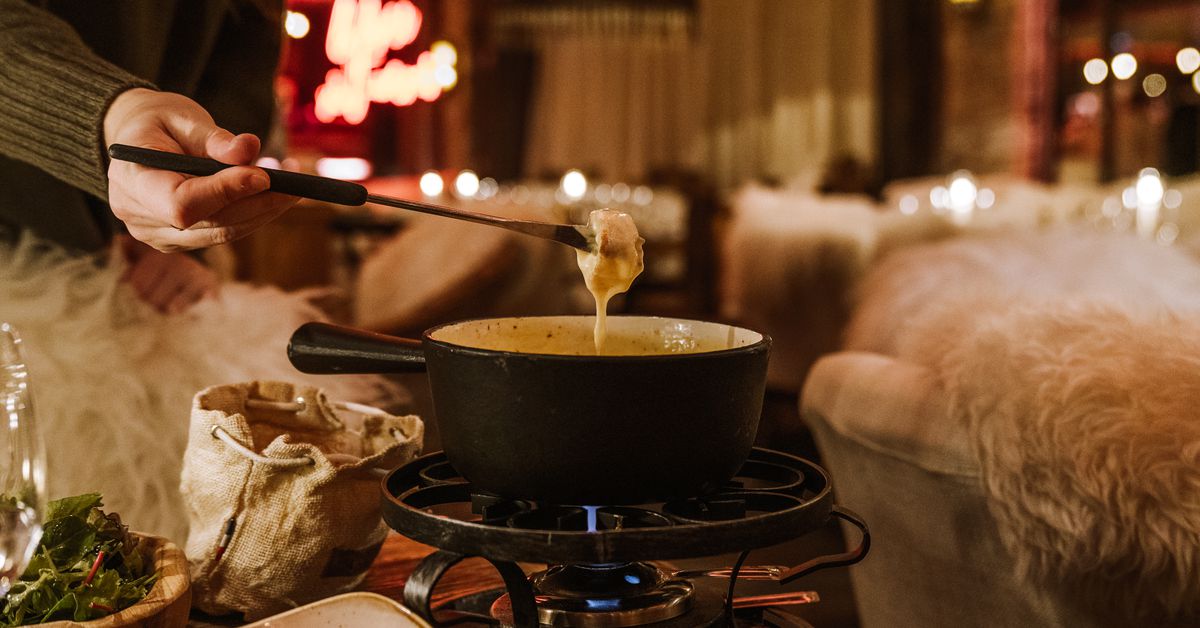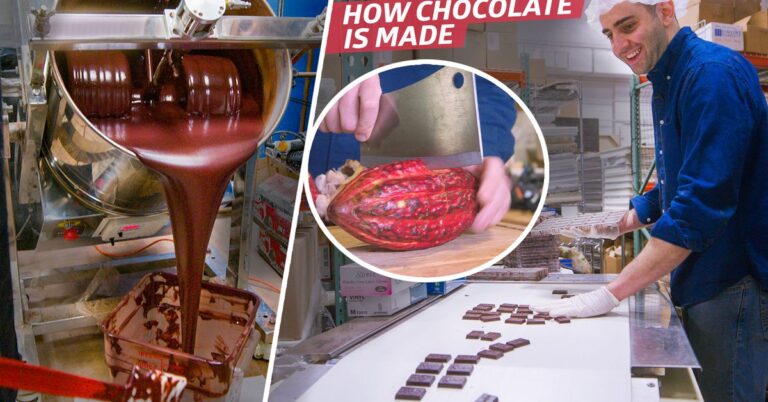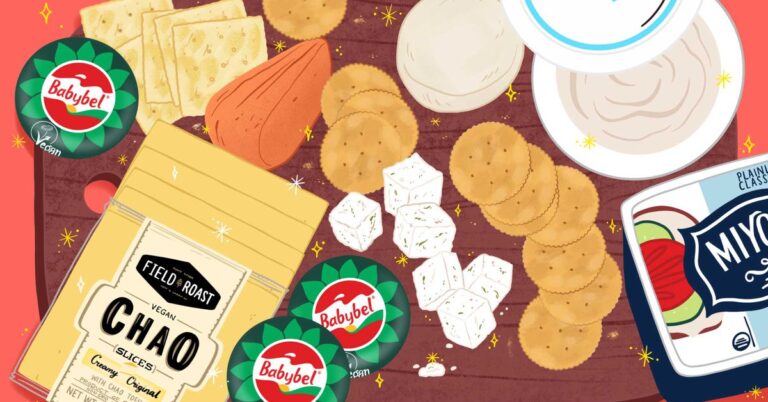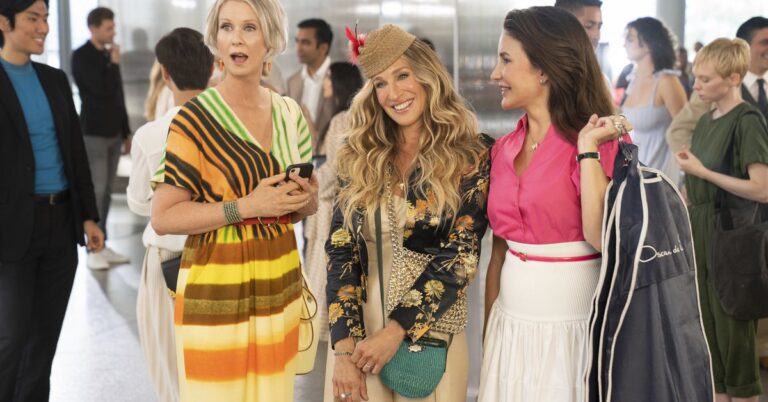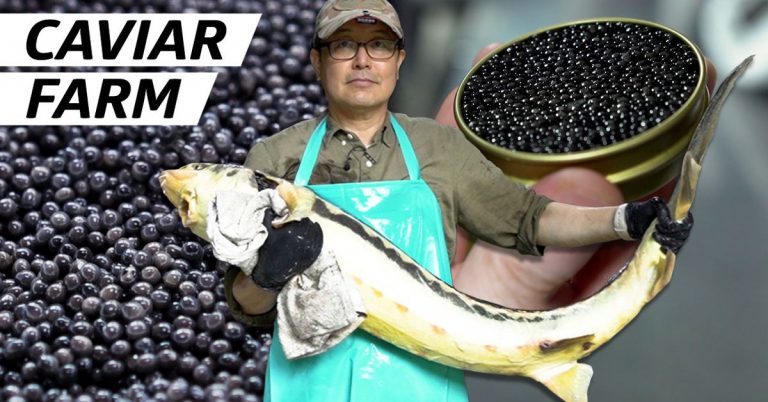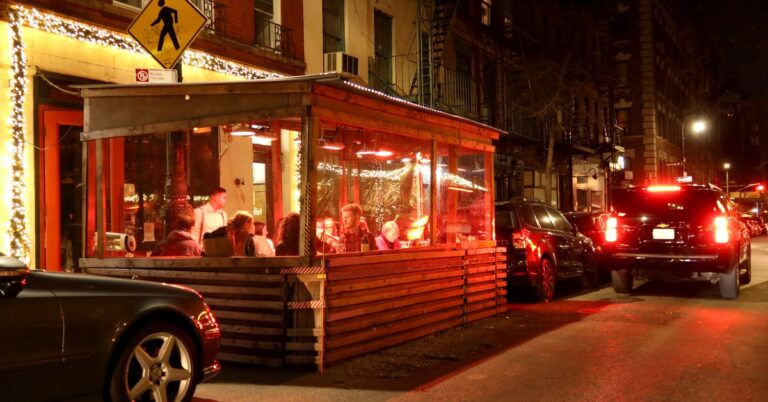A Culinary Guide to Megève, the French Alps’s Best Ski Town for Food
Of the eight countries touched by the Alps, France is home to some of the range’s most beloved and internationally renowned destinations. Every winter, serious skiers and snowboarders flock to the Three Valleys — the world’s largest contiguous ski area connecting the resorts of Courchevel 1850, Val Thorens, Méribel, and Les Menuires — as well as historic, picturesque mountain towns like Chamonix, host of the 1924 winter Olympics and widely considered Europe’s capital of mountaineering.
If its neighbors are known for attracting expert skiers and glacier hikers, Megève, then, has emerged as the gourmet destination among the region’s prestigious resort towns. As the snow piles up outside huge picture windows, diners dip into rich pots of fondue at elaborate wood-lined chalets, clink craft cocktails while cozying up on faux fur and leather banquettes, party late into the night with culinary stars, and eat their way through Michelin-starred Alpine cuisine from some of the country’s most esteemed chefs. With even more elevated fairytale vibes than Chamonix and a more laid back atmosphere than The Three Valleys, Megève is beloved among mountain newbies and full-time diners who consider any winter sport a perfunctory prelude to après-ski.
:no_upscale()/cdn.vox-cdn.com/uploads/chorus_asset/file/23229876/Megeve_06534.jpg)
In 1911, the town became a stop on the Tour de France, and in 1926, Baroness Noémie de Rothschild opened a resort at the foot of the Mont d’Arbois to compete with Switzerland’s glamorous St. Moritz. Over the course of a century since, the former farming village has evolved into a well-manicured storybook town complete with horse-drawn carriages, cobblestone footpaths, grandiose forests, and iconic chalets. Especially following WWII, France’s high society (including, most famously, Jean Cocteau) cemented Megève as a luxurious Alpine lifestyle destination. Like Aspen (which originated as a mining town), Megève became a playground for wealthy winter enthusiasts — though it does still retain some affordable pastimes (like snowshoeing) and dining options (traditional fondue spots, plus a new crop of bars for cocktails and shared plates).
As Meredith Erickson summed it up in her comprehensive mountain cookbook, “Alpine Cooking,” the French Alps may be smaller than other European ski regions, but “the quality of the cuisine and wines is inversely proportional to its size.”
WHAT IS FRENCH ALPINE CUISINE?
It wasn’t until the late 1990s that Megève landed on the destination dining map, mostly thanks to Emmanuel Renaut, a Meilleur Ouvrier de France and chef at three-Michelin-starred Flocons de Sel. “When I first moved to the area, ski stations were for skiing. Food was decent but basic, not worthy of any kind of dining expedition,” he says. Aside from fondue, no one was exploring seasonal, vernacular cooking. After coming up under celebrity chef Marc Veyrat, an early proponent of country cooking and sourcing local ingredients, Renaut broke out on his own in 1998 with (the original location of) Flocons de Sel, where he started cooking local freshwater fish like pike perch, fera, and arctic char; building his own produce and herb gardens; cultivating his own honey; and raising his own chickens. As a self-proclaimed messenger of the mountain, Renaut’s nature-driven cooking paved the way for rising culinary stars like Anthony Bisquerra and Julien Gatillon, and inspired established, award-winning chefs such as Eric Frechon of Le Bristol and Anne-Sophie Pic to set up operations in and around Megève.
If crispy buckwheat crepes and oysters, boeuf bourguignon, and briny fish stews have come to define Brittany, Burgundy, and Provence, respectively, Alpine cooking is built around the rich and nourishing ingredients that proliferate in the Savoie region.
Dairy products take center stage here, specifically cheeses like Abondance, Beaufort, Mont d’Or, raclette, Tomme de Savoie, and Reblochon. There is some disagreement about the particular mixture of cheeses that make up the Fondue Savoyarde but you’re likely to see Beaufort, Abondance, and Emmental de Savoie. Cheese is also woven into dishes like tartiflette, a comforting, gut-busting potato gratin with Reblochon and bacon, a signature dish meant to keep mountain dwellers warm through long winters.
Mountain berries, pome and stone fruit, wild mushrooms, and root vegetables thrive in the region and appear regularly on restaurant menus in soups, fondue, and tarts. There are also more obscure local items like cardoon (an artichoke relative), which Renaut famously serves with truffles. You can also expect a variety of charcuterie and local game, including chamois (a goat-like animal native to European mountain ranges) and freshwater fish, as well as Savoyard staples such as crozets (tiny cubes of buckwheat pasta) and potée, a one-pot pork and vegetable stew that can be found across ski towns.
In the summer months, everything gets a bit lighter — the meat might be served in a tartare rather than a stew; the fish accompanied by zucchini, tomatoes, and herbs; and the tarts overflowing with apricots and red fruit. Still, if potatoes or bread topped with oozing cheese appeals to you despite the heat, you’ll find that served all year round, too.
:no_upscale()/cdn.vox-cdn.com/uploads/chorus_asset/file/23229885/Flocons_de_sel_06370_Edit.jpg)
:no_upscale()/cdn.vox-cdn.com/uploads/chorus_asset/file/23229890/Flocons_de_sel_06540.jpg)
WHAT TO KNOW BEFORE YOU GO
Ski season: Megève’s low altitude can mean limited snow cover in the earlier parts of the season from December through January. The scene heats up (or cools down) by mid-February.
Summer in Megève: Don’t overlook an Alpine trip during the summer. Unlike the modern, high-altitude, purpose-built ski towns elsewhere in the region that empty out of big spenders at the end of the winter, Megève is a second home for families from Lyon, Geneva, and Paris who keep restaurants humming even as the snow melts and the hikers take over. Institutions such as Flocons de Sel remain open year round.
Après-ski: Considered by some to be the most appealing part of a ski getaway, this is anything and everything that happens off the skis and snowboards. That may range from sipping Champagne and vin chaud on a slopeside terrace, to spa treatments and late-night dancing.
Henry-Jacques Le Même: The distinctive wood and stone ski chalet style, built out by architect Henry-Jacques Le Même, defines the local landscape. The double-pitched roofs, large picture windows, colorful shutters, and wide balconies add an element of storybook drama to dining experiences and midday strolls through town.
Tour de France: Come summer, skiers give way to cyclists in Megève, as professional cyclists ride through town for the 10th stage of the Tour de France, followed by hundreds of amateurs close behind. Camping vans and groups of supporters line the sides of the road, but you’re unlikely to experience much disruption when it comes to dining or shopping in the main village area.
:no_upscale()/cdn.vox-cdn.com/uploads/chorus_asset/file/23229898/Chalet_Forestier_06492.jpg)
WHERE TO EAT
La Table de l’Alpaga
Since 2017, the Basque-born chef Anthony Bisquerra has presided over the L’Alpaga hotel’s excellent duo of restaurants. The more intimate of the two, La Table, earned a second Michelin star in 2020 for the chef’s inventive mountain cooking. He makes liberal use of local herbs and produce, which he forages on his days off, and takes a firmly anti-waste approach to fish and meat. For example, Bisquerra salvages the claws from a jumbo shrimp starter for stuffing, and repurposes the head and shell to infuse oil for a sauce. A fully plant-based tasting menu is available, beautifully highlighting the diversity of regional agriculture. Tasting menus starting from $147 for six courses.
Flocons de Sel
If there is a single reason to eat in Megève, it’s Renaut’s exceptional, three-star celebration of the Alpine larder. In an understated dining room, with blonde wood beams, minimal decor, and mountain views through floor-to-ceiling windows, the chef takes Savoyard cooking well beyond cheese to feature wild lake fish and game, berries, and a vast array of locally grown vegetables. On constantly changing menus, signature dishes include a beetroot and parsnip gnocchi in a horseradish consomme; steamed and lightly roasted cardoon with a truffle and herb vinaigrette; a lightly toasted mound of pike fish with the texture of tofu, served on a bed of onions and topped with tiny balls of black rice and buckwheat; and tender, roasted venison served with mushroom tartelettes and a shallot and beetroot puree. Look out for the cheese trolley, which comes around with an irresistible display before dessert. Prix-fixe menu around $190 at lunch, $280 at dinner.
Chalet le Forestier and Flocon Village
If chef Renaut’s three-star table is beyond your budget, there are two other options to get a sense of his culinary style and appreciation for local ingredients. His rustic Chalet le Forestier, set in a former base for forest wardens, sits directly on the Forestier ski run in the Rochebrune massif, making it accessible on skis or foot. An international crowd of ski bunnies pack into the woody dining room and sun-drenched terrace (with ample ski storage) for hearty twists on classic dishes, from fera fish nuggets and souffled quenelle de brochet (pike fish with prawn sauce) to venison Bolognese and mascarpone Mont Blanc for dessert ($30-50 for lunch). In the center of town, the chef has both a modern bistro with more involved dishes (grilled char fish, Reblochon cheese rolls, and seasonal soups) and an Airstream parked out front for to-go comforts like Beaufort and truffle croque sandwiches and sausage with hay-smoked potatoes ($5-25).
Nous
When Julien Gatillon left the Edmond de Rothschild Heritage group, where he spent nearly 10 years in charge of various restaurants including the Chalet du Mont d’Arbois (now part of the Four Seasons), he swapped impressive, spacious dinings rooms for a far more intimate space and concept. From his perch in a new wooden chalet overlooking the village of Megève, he runs a private chef’s table with his wife Sonia Torland. Available for reservations of two to 12 people, the menu is entirely bespoke, plotted out with guests in advance (wines can be selected directly from the chef’s cellar). Expect a minimum of $200 per person.
:no_upscale()/cdn.vox-cdn.com/uploads/chorus_asset/file/23229920/Megeve_06660.jpg)
:no_upscale()/cdn.vox-cdn.com/uploads/chorus_asset/file/23229926/Chacha_06122.jpg)
Cosa Papa
On paper, the idea of a design-centric Italian trattoria with a three-lane bowling alley seems gimmicky. But with good cocktails, crowd-pleasing pizza and pasta (get the zucca, a pie with pumpkin cream, mozzarella, smoked provolone, and pancetta), and a well-curated playlist, this new spot from the Annie Famose group (named for the Olympic and world champion Alpine skier) is legitimately fun. It’s open to all crowds until 10 p.m., when minors get the boot, the energy goes up a few notches, and the night crowd descends. Book your lane and your table in advance. ($20 per game for up to 5 people).
Indie Mountain
The latest arrival to the Megève nightlife scene comes from a trio of young restaurateurs known for their hotspots in Saint Tropez. Kitted out like a private wooden chalet, with plush banquettes and armchairs, cozy dining nooks, and floral wallpaper, the two-level restaurant plays it demure through dinner and then dials up the festivity (and the music) from 10 p.m. until late. Chef Diego Alary, who competed on the last season of French Top Chef (and is reportedly the most followed chef on TikTok) developed the menu of comforting, cold-weather classics with a twist. From Beaufort and pesto garlic bread and morel mushroom soup with puff pastry crust, to a revisited tartiflette and pumpkin velouté with fresh goat cheese, Alary demonstrates that quality food can exist in a party atmosphere (between $18-50). Even if you don’t stay late, be sure to order the Mountain Elixir, one of head mixologist Melina Carnio’s supremely balanced craft cocktails with green Chartreuse, pineapple falernum, and lime (around $20).
Chacha
This is the quintessential après-ski nighttime destination. An intergenerational crowd sinks into chunky leather sofas and comfortable armchairs layered in faux fur to sip craft cocktails while listening to live music. Superstar chef Renaut developed a solid menu of elevated bar snacks, including crispy polenta, lake perch fillets, wild mushroom fricassee, and mountain hummus (chickpea mixed with root vegetables and juniper berries), suitable for a light meal or pre-dinner aperitif (starting at $16).
The Restaurant Alpin from Les Fermes de Marie
As varied as the cuisine has become in Megève, a stop for traditional fondue is a non-negotiable during any stay. At the Restaurant Alpin, the Sibuet family who own Les Fermes de Marie joined forces with master cheese maturer Frédéric Royer of La Fromagerie Boujon for a menu of Savoyard classics, including a fondue recipe that was named the best in Megève in 2019 at the Toquicimes culinary festival. Other worthy options include péla des Aravis, a rich potato dish with bacon and onions; lake fish soup; raclette; and the region’s standout sponge cake, the gâteau de Savoie. ($35 for fondue)
:no_upscale()/cdn.vox-cdn.com/uploads/chorus_asset/file/23229915/Ferme_Saint_Amour_06669.jpg)
:no_upscale()/cdn.vox-cdn.com/uploads/chorus_asset/file/23229919/Ferme_Saint_Amour_06692.jpg)
La Ferme St. Amour
In an immense restored farmhouse in the middle of town, this restaurant-bar-club plays up the cozy winter chalet aesthetic with exposed wood beams, benches lined with furry throw pillows, and wicker light fixtures. The menu, created by Michelin-starred chef Eric Frechon of Le Bristol in Paris (and restaurants in Saint-Tropez, St. Barts, and Normandy), leans into après-ski with comforting dishes best enjoyed after sweating it out on the slopes all day. You’ll find fondue, roasted chicken with chestnuts, truffle croque monsieur, velvety soups, and Alpine cheese platters (starting from $30). Go for lunch and sit outside on the veranda, or go for dinner and watch the crowd transform throughout the evening, from lazily listening to live singers to dancing on tables to a DJ set.
WHERE TO SLEEP
L’Alpaga
The 22 rooms and common areas of this property, set off from a quiet country road less than a 10-minute drive from the center of town, were entirely rethought by the New York design firm Charles & Co. They gave the rustic chalet and spa a contemporary touch, with locally made furnishings in velvet and leather, vintage decorative pieces set among framed ski scenes, and a soothing earthy color palette. The goal was to complement the natural visual drama right outside the hotel; many rooms have their own balconies or terraces, so you don’t even have to head to the slopes to experience magical mountain light and Mont Blanc views. A complimentary shuttle drops guests in the village and at ski lifts upon request. Rooms starting at $665 per night during high season.
Flocons de Sel
This isn’t only a spot to spend the night after what could be a life-changing meal at Flocons de Sel, but a restorative destination in itself. The chef and his wife, Kristine, have designed the place like a private home, with seven rooms, two suites, two chalets, and one wooden apartment with a full kitchen overlooking the valley. Wool quilts, spacious bathrooms, an intimate pool area and spa, and one of the best in-room dining menus in the area make a comfortable refuge in any season. It’s not unusual to find the chef plating eggs for the breakfast service and checking in on the temperature in the outdoor Nordic bath — he is hands-on in every aspect of his operation and it’s all the better for it. For a more central stay, the Renauts also run a two-room private chalet for rent adjacent to their restaurant Flocon Village. Rooms starting at $475 per night during high season.
Au Coin Du Feu
A quick walk from the main village, this 22 room hotel is what the locals would call dans son jus. The preserved, old-world wooden skier’s chalet is in the exact architectural style that Henry-Jacques Le Même established in the 1930s, right down to the colorful shutters. Rooms are comfortable and simple, with an understated farmhouse aesthetic (think lots of wood, earthy-colored textiles, and local stone). Aside from the property’s prime location, year-round availability, and spacious outdoor dining area, it’s the postcard mountain views from guest room balconies that make this an ideal home base. Rooms starting from $115.
:no_upscale()/cdn.vox-cdn.com/uploads/chorus_asset/file/23229933/Megeve_06746_2.jpg)
Coeur de Megève
For those who want a home base in the heart of the village, Coeur de Megève is the least traditional of the boutique properties in the area. The 39 rooms feature a markedly sleek Scandi aesthetic (think brushed wood floors and walls, minimalist linens, and mid-century modern furnishings). Lounge areas and dining rooms are more colorful, with Alpine decor, fuzzy cushions, sheepskin rugs, and a roaring fireplace. Expect to run into locals at La Muse, the solid hotel bistro that does light riffs on Savoyard classics, or at the Tata Harper spa. Rooms starting from $450.
Les Chalets du Mont d’Arbois
Les Chalets du Mont d’Arbois put Megève on the map when the Rothschild family opened its doors in the 1920s, but the property got a top-to-bottom design overhaul a few years ago when it joined the Four Seasons portfolio. The 41 rooms are decked out in a mix of rustic and bohemian design, and suites are spread across three traditional wooden chalets. There are indoor-outdoor pools, a spa, several on-site restaurants (La Table de Noémie offers a fine dining twist on classic Savoyard fare), and close access to the Mont d’Arbois slopes. If there’s anything you can’t do or find here, the resort’s sister property up the road, the Four Seasons Megève, will certainly be able to deliver (including a new outpost of chef Anne-Sophie Pic’s excellent Dame de Pic – Le 1920 restaurant). Rooms starting from $660.
Les Fermes de Marie
Located at the top of a country road, it’s easy to mistake this hamlet of wooden ski chalets and farms for a private residence. But it’s actually one of Megève’s most iconic places to sleep, eat, and get pampered. Opened in 1989 by France’s influential boutique hotelier duo Jocelyne and Jean-Louis Sibuet, the property is made up of 70 rooms spanning nine chalets and mazots (pasture huts), each designed by the couple with the kind of rustic chic decor (lots of fur and fuzzy cushions, trophy heads, antique furnishings, and plenty of fireplaces) that has inspired an entire generation of Pinterest users. There are also two on-site restaurants, a spa, and close access to the best slopes. Rooms starting from $600.
Lindsey Tramuta is a Paris-based writer and the author of The New Paris and The New Parisienne: The Women & Ideas Shaping Paris. Joann Pai is a food & travel photographer in Paris, originally from Vancouver, Canada.
